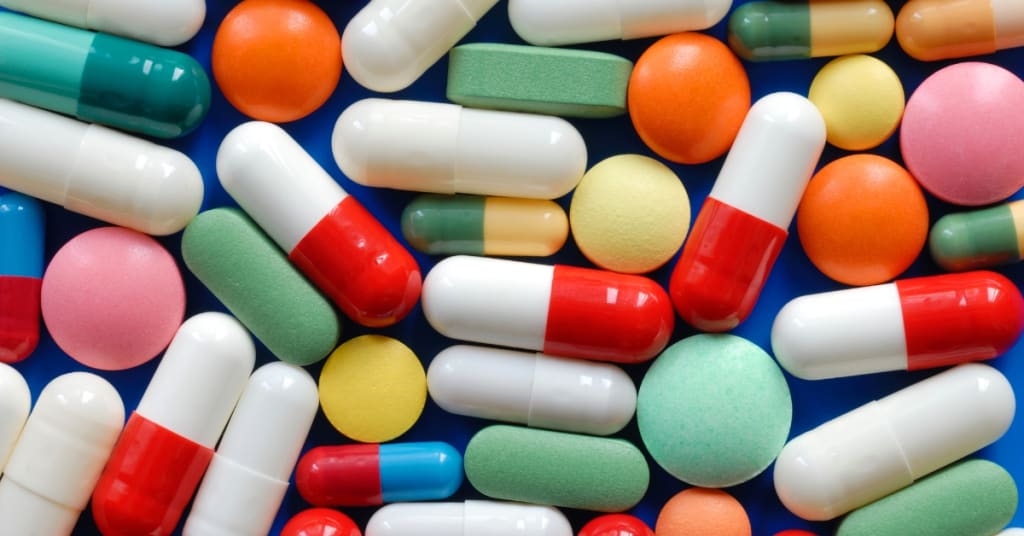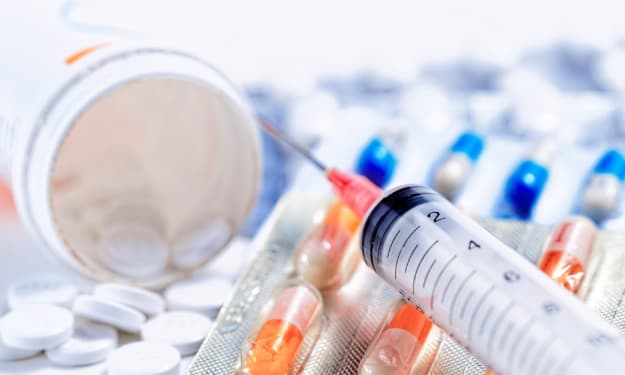How Do Drug Tests Detect Synthetic Drugs?
How Drug Tests Detect Synthetic Drugs: Mechanisms, Challenges, and Advances

Introduction
Consider yourself a detective searching for undiscovered information; however, rather than cracking cases, you're finding artificial substances in human tissue. Finding these elusive chemicals has become crucial for maintaining public health and safety as synthetic drug use has increased. How therefore do drug tests measure up to the task of identifying these man-made substances? Now let's explore the complex field of synthetic drug detection!
What Are Synthetic Drugs?
Designer medications, often known as synthetic drugs, are compounds that have been chemically manufactured to replicate the effects of conventional pharmaceuticals. Synthetic medications, in contrast to natural drugs produced from plants, are created in laboratories, frequently with the goal of avoiding regulatory constraints.
Common Types of Synthetic Drugs
Synthetic Cannabinoids: Also referred to as "Spice" or "K2," these laboratory-made substances resemble THC, the psychoactive component of marijuana.
Synthetic Cathinones: Also known as "bath salts," these chemicals have a stimulant quality similar to that of cocaine and MDMA.
Synthetic Opioids: Designed to mimic the effects of naturally occurring opioids, these powerful painkillers include fentanyl analogs.
Why Are Synthetic Drugs a Concern?
Because synthetic medications are frequently more strong and unpredictable than their natural counterparts, there is reason for caution. They are challenging to identify and control due to the great variations in their chemical composition.
Overview of Drug Testing
The procedure of drug testing involves determining whether an individual's system contains any prohibited substances or their metabolites. It is essential to many industries, such as law enforcement, sports, and workplace safety.
Purpose of Drug Testing
The main goals of drug testing are to:
- Make sure places like workplaces and schools are safe.
- Encourage sportsmanship in the game.
- assist with legal and medical inquiries.
Types of Drug Tests
Urine Tests: Common and non-invasive, used for detecting recent drug use.
Blood Tests: Provide a more accurate measure of current intoxication levels.
Hair Tests: Detects drug use over a longer period.
Saliva Tests: Useful for detecting recent drug use.
Sweat Tests: Involve patches that can detect drugs through perspiration over time.
Mechanisms of Synthetic Drug Detection
Understanding how synthetic pharmaceuticals interact with the body and can be found in biological samples is essential to the detection of these chemicals.
How Do Synthetic Drugs Work in the Body?
After entering the body and being absorbed into the bloodstream, synthetic medicines move throughout the body's tissues and organs. To achieve their desired effects, they either attach to particular receptors or imitate endogenous neurotransmitters.
Metabolites and Their Role in Detection
Synthetic medications are broken down into metabolites by the body during the processing stage. These metabolites are often more stable and simpler to identify than the parent drug and can be found in biological samples.
Types of Tests for Synthetic Drugs
To identify synthetic pharmaceuticals, several techniques are employed, each with specific benefits and drawbacks.
Immunoassay Tests
Principle: To identify certain drug metabolites, use antibodies.
Pros: Economical and timely.
Cons: Because of cross-reactivity, it could result in false positives.
Gas Chromatography-Mass Spectrometry (GC-MS)
Principle: Separates and identifies compounds based on their mass and charge.
Pros: Highly accurate and reliable.
Cons: More expensive and time-consuming than immunoassays.
High-Performance Liquid Chromatography (HPLC)
Principle: Uses high pressure to push solvents through a column to separate compounds.
Pros: Effective for detecting a broad range of substances.
Cons: Requires sophisticated equipment and expertise.
Liquid Chromatography-Tandem Mass Spectrometry (LC-MS/MS)
Principle: Combines liquid chromatography with mass spectrometry for precise detection.
Pros: Extremely sensitive and specific.
Cons: Expensive and complex to perform.
Challenges in Detecting Synthetic Drugs
Synthetic medications are difficult to detect because of their distinct characteristics and quick evolution.
Constant Evolution of Synthetic Drugs
New variations of synthetic pharmaceuticals that can avoid detection are always being created through modification. Maintaining current testing techniques is challenging due to this ongoing change.
Lack of Standardization
Synthetic medications frequently lack a consistent formula, which causes differences in their chemical makeup. The creation of trustworthy detection techniques is hampered by this lack of standardization.
Cross-Reactivity
Because of their structural similarities, some synthetic medicines might cause false positives on tests meant to identify other compounds, potentially causing results to be misinterpreted.
Advances in Synthetic Drug Detection
Notwithstanding these obstacles, research and technological developments are making it easier to identify synthetic medications.
Emerging Detection Technologies
Drug testing is becoming more widely available and efficient because of new technology including portable testing equipment and sophisticated sensors.
Enhanced Analytical Techniques
Greater sensitivity and precision are possible with methods like time-of-flight mass spectrometry (TOF-MS) and ultra-high-performance liquid chromatography (UHPLC).
Development of Comprehensive Libraries
By using pattern recognition and comparison, the creation of large libraries of well-known synthetic medicinal molecules facilitates the quick identification of novel versions.
Legal and Ethical Considerations
Important legal and ethical issues pertaining to consent, privacy, and regulation are brought up by the discovery of synthetic pharmaceuticals.
Regulatory Standards
The guidelines and criteria for drug testing are influenced by regulations that differ by nation and industry.
Privacy Concerns
It is difficult to strike a balance between the necessity of drug testing and respect for personal privacy, necessitating thoroughly thought out procedures for confidentiality and permission.
Conclusion
Since synthetic medications are always evolving and have strong effects, they present a serious threat to public health. Drug testing has evolved to meet these problems by using sophisticated detection techniques, although constant watchfulness is still necessary due to the substances' continued evolution. We can better negotiate the difficulties of finding these elusive compounds if we have a greater understanding of the mechanisms, difficulties, and developments in synthetic drug detection.
About the Creator
Enjoyed the story? Support the Creator.
Subscribe for free to receive all their stories in your feed. You could also pledge your support or give them a one-off tip, letting them know you appreciate their work.






Comments
There are no comments for this story
Be the first to respond and start the conversation.